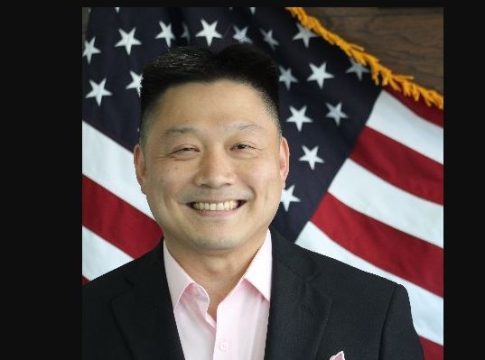By Tabasa Ozawa
The recent wave of attacks against Asian people has left me angry and distressed.
84-year-old Thai man, Vicha Ratanapakdee , passed away last week when he was tackled to the ground by a young man in San Francisco. Just a few days later, in Oakland’s Chinatown, a 91-year-old man was similarly pushed to the ground along with two other victims. In Manhattan, Filipino man Noel Quintana was slashed across the face after an argument on the subway. These news stories have remained on local news outlets and have failed to catch the attention of the mainstream media.
But these attacks are not new. The COVID-19 pandemic has brought about a marked increase in anti-Asian hate incidents across the nation. According to the self-reporting center Stop AAPI Hate , there were 2,808 hate incidents against Asian Americans from March through the end of the year. Former President Trump’s conflation of COVID-19 and China with racist terms like “China virus” has undoubtedly contributed to this spike.
Since his inauguration, President Biden has issued a memorandum condemning racism against Asian Americans and Pacific Islanders. The document acknowledges the Federal Government’s role in fueling xenophobia and outlines best practices moving forward including increasing language access for COVID-19 response, expanding data collection and reporting systems for hate incidents, and supporting the existing efforts of local agencies and community-based organizations. It’s a good start but we have to remain cautious of police-based responses that could exacerbate the historical tension between the Asian and Black communities.
LATEST STORIES
Increasing policing in Asian communities may seem like a quick and convenient solution. In August, the New York Police Department created the Asian Hate Crime Task Force to address the uptick in anti-Asian violence. Made up of 25 Asian American detectives who speak several Asian languages, the task force aimed to combat the community’s cultural fear and mistrust of the police and the lack of translation and interpretation services. While this task force looks like progress on the surface, we cannot forget the consequences of resorting to increased policing. We must remember what the summer of Black Lives Matter protests were calling for.
The police have also been a major perpetrator of violence against Asian Americans. On December 30, 2020, 19-year-old Christian Hall from Pennsylvania was shot and killed by the police during a mental health crisis. Pennsylvania state police released a statement claiming that Hall was shot when he pointed his gun in their direction. However, a newly surfaced video clearly shows that Hall had his hands raised when the police opened fire. Christian Hall was a distressed young man who needed help, not police intervention. We have to ask ourselves, what would a culturally competent task force do to prevent the systemic police violence against minorities?

Instead of relying on a police-based approach for anti-Asian racism that further criminalizes the most marginalized, we must invest in community-based anti-racism programs that organize community patrol, create culturally sensitive reporting systems for hate crimes, provide upstander training, and conduct education and counseling. A non-police alternative to racism intervention is possible and we must continue to demand it because all too often, promising community-based initiatives are defunded for no reason.
Strategies like community-based reporting have been proven to work during this pandemic. Compared to the 340 hate incidents in New York reported by Stop AAPI Hate, the NYPD recorded 21 cases of hate crimes over a similar period. While it is true that many hate incidents do not amount to the legal definition of a hate crime, failing to report these incidents masks the true extent of the problem and therefore the extent of the intervention needed.
We also need to dig deeper to address the myth of Asian Americans as perpetual foreigners to address the root cause of discrimination. We can do so by implementing a more representative K-12 curriculum that celebrates the history and diversity of Asian Americans. The current curriculum employs a “deficit frame” by focusing on the historical oppression of Asians such as the Chinese Exclusion Act but ignores their contributions to society and their contemporary experiences. Asian American youths have reported increased incidents of bullying during the pandemic, signifying the importance of early anti-racism education.
Lastly, we need to continue telling our stories so that the violence doesn’t go unnoticed. Mainstream media needs to do a better job reporting and condemning the rising hate incidents. Please listen to our community and share our voices with yours: show that our lives are important. Let’s stand in solidarity for each other because hate is a deadly virus.
Tabasa Ozawa is an MPH student at Columbia University Mailman School of Public Health.
AsAmNews has Asian America in its heart. We’re an all-volunteer effort of dedicated staff and interns. Check out our new Instagram account. Go to our Twitter feed and Facebook page for more content. Please consider interning, joining our staff, or making a financial contribution to support us.








For decades now, many forces have joined in shaping the East-Asian into a hated target in the Western eye. From television’s usual dark portrayal of East Asians as gangsters a la Tong members or Opium drug dealers to movies never using East-Asian as good role models, the entertainment industry is one of many sources of the negative visceral reactions many Westerners have against East-Asians. Even in children’s shows, the nurturing of negative perceptions of East-Asians can be seen in Season 3 of Ned’s Declassified School Survival Guide’s Asian character of Evelyn Kwong. She was portrayed as loud, proud, and a grouch. In the hit show, Community, “Ken Jeong as Ben Chang, an extremely unstable Spanish professor at Greendale: Chang often takes extreme action against students or seeks to gain power. He has alternately been a friend and foe of the study group.” (Wikipedia). When were East-Asians ever portrayed in a positive light? Even when East-Asians starred in the remake of ‘Hawaii Five-O” to its successful start, they were quickly replaced by other ethnic groups as heroes who fight crime and evil; East-Asians continue to star in roles as criminals almost exclusively. Of course, there were always the Talk Show hosts who kept chirping on “Chi-COMM,” and other offensive monikers about East-Asians. In many online “news” sites, pictures of East-Asians are usually used when there are negative headlines, like illegal aliens.
It’s not Xenophobia. American helped elect Kamala – of part-Indian descent. Nothing derogatory was said about Indians from India.
It’s SINOPhobia. The hatred all things resembling Chinese and the maligning and caricaturing of anything East-Asian. When 9/11 happened, many prominent people and mass media came out in force to defend and protect Muslims and everyone of Middle-Eastern descent. Where is the mass media coming out against SinoPhobia?
Until the media stops this psychological conditioning of Westerners’ negative and hurtful impressions of East-Asians, East-Asians will continue to face Racism and bigotry in America.
Kathy, historically, it has been far more than decades in which as you say ‘sino-Asians’ [great differentiation] have been targeted. Since our large arrival in 1849 for the gold rush, Chinese have been targeted as the bad guy. Lynchings, burning our villages on the west coast, being blamed for the white man’s unemployment, driving out entire populations of Chinese from western states, laws passed against the Chinese – all supported by local, state, and federal governments. Most often sheriffs and police were part of the lynchings and driving out of Chinese (in Bellingham, WA they did the same to the Sikhs). My Asian American performing arts non-profit Eth-Noh-Tec is dedicated to celebrating diversity and we have organized the Asian American storytellers around the world to tell the stories that are both ancient and contemporary that help to break up stereotypes about us and cement the truth about how long we have been Americans. We have several programs to address this. My own writing and performances have 4 in particular that address this theme: 1) Red Altar that follows generation of one Chinese family, the first generation that started the fishing industry in Monterey, CA. in 1850 despite all the racist violence and laws; 2) Shadows & Secrets about a wealthy and successful Chicago Chinese restaurateur and his interesting life, and unusual mysterious death; 3) Takashi’s Dream about an atom bomb survivor and his journey from rage to forgiveness in America; and 4) Bittersweet – Chinese American mother and daughter relationship. Our folktales always have a message that conveys our Asian ethics, values and humanness. Your wish is being addressed locally – maybe not as much on screen as much as we would all like it to be – yet. And we all perform around the world – before pandemic. So the word is being spread that we are human afterall!!! And have made major contributions to this country.
Nancy, You are right about the length of discrimination perpetuated against Sino-Asians. I was thinking more in terms of using the mass media to continue this negative stereotype, especially the visual and electronic type. I was saddened by the non-stop display of hatred toward Sino-Americans. Until recently, I have not spoken up nor said much about SinoPhobia. I began posting a few things on Facebook, and was quickly directed to how the Sikhs were picked on right after 9/11 by my white friends. I didn’t bother asking them: does it make it right for the hatred upon Sino-Americans now?
I am glad you have a group that is trying to address this ugliness in America. Do you have a website I can follow?
One of ways by which they keep perpetuating and making Sino-Americans aliens and excluded is that we are never referred to by the color of our skin as the rest of the world is, but we are always referred to as “Asians.” It did not matter if we were born in the USA, we are always alienated because we are “Asians.” We should not be excluded by being singled out to belong only to one continent: Asia. Yes, they refer to us as the color “Yellow.” But, who wants to be called “Yellow” in the West with all its negative and cowardly connotations? I suggest that we call ourselves: TAN. We can be included into the fabric of American society of white, black, red, and brown. A single syllable just like the rest of Americana – TAN – with no negative stigma to this color, like YELLOW. Tan is a part of the gradation from white – tan – red – brown – & black. Yellow is so jarring. Do you think you can help spread our new identity of TAN?